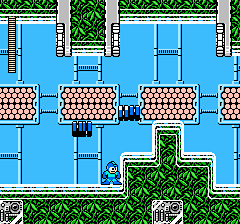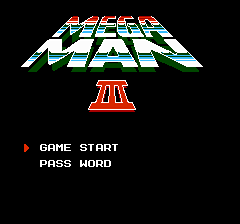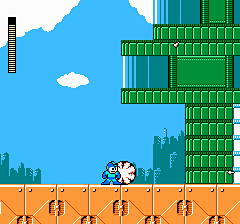
Mega Man 3 (1990-)
Developer: Capcom
Publisher: Capcom
Genre: Platform
Mega Man 3 is a platform action game developed and published by Capcom for the Nintendo Entertainment System, released in 1990 in both Japan and North America. As the third installment in the Mega Man series, it builds directly on the success of its predecessors, refining gameplay mechanics and introducing new features to keep the series fresh and challenging. The game was later re-released on several platforms, including the PlayStation as part of the Mega Man Anniversary Collection, the Game Boy Advance, and digital platforms for modern consoles, making it accessible to new generations of players. The game’s design was inspired by the ongoing popularity of the series, aiming to expand the story, diversify the levels, and add depth to Mega Man’s abilities.
In Mega Man 3, players control Mega Man as he confronts the return of Dr. Wily, who has once again unleashed a group of Robot Masters to threaten the world. The game features eight new Robot Masters, each with a unique themed stage filled with enemies, hazards, and platforming challenges that test the player’s timing and reflexes. A key addition to the gameplay is the introduction of Mega Man’s canine companion, Rush, who can transform into various forms such as a springboard or a jet to aid navigation and combat. The signature mechanic of acquiring defeated bosses’ special weapons remains central to the strategic element, allowing players to exploit weaknesses and plan their route through the stages.
The soundtrack of Mega Man 3 continues the series’ tradition of energetic and memorable music, with each stage having a distinctive theme that reflects the environment and challenge of the level. The compositions emphasize pace and intensity, complementing the action while making each stage recognizable and engaging. Sound effects for jumping, shooting, and weapon use are crafted to provide immediate feedback and enhance the sense of impact, maintaining the responsive feel that the series is known for. The music, in particular, is widely praised and has become emblematic of the NES era, contributing significantly to the game’s enduring appeal.
Mega Man 3 was promoted as a major evolution of the franchise, highlighting its new gameplay elements, refined level design, and the addition of Rush to the player’s arsenal. The game was met with critical acclaim, with reviewers praising its challenging yet fair difficulty, creative stage design, and memorable music. Its success ensured the continuation of the series with Mega Man 4 and subsequent entries, cementing the franchise as a cornerstone of NES platform gaming. Over the years, Mega Man 3 has appeared in multiple compilations and re-releases, maintaining its reputation as a classic and influential title within the Mega Man series.
Images from MobyGames
Buy Mega Man 3
Click one of the Ebay or Amazon buttons below to check the latest prices and purchase Mega Man 3 for the Nintendo Entertainment System.

Related Searches
Mega Man 3 NES Download
Mega Man 3 is available to purchase and download from a range of vendors. Always shop around...
Mega Man 3 NES Manual
Various repositories around the internet have scanned and archived a range of retro manuals. Search now to.....
Mega Man 3 NES Rom
We don't host or link to rom sites for this game. However, there are many sites out there that may be...
Mega Man 3 NES Walkthrough
Many sites - particularly YouTube - host a range of walkthrough videos to guide you in your quest to get...
Mega Man 3 NES Cheats
There are various sites out there that can offer cheat codes for games. Search now to find all available...
Mega Man 3 NES Controls
This information can often be obtained through the user manual. Alternatively there are many sites out there...
Mega Man 3 NES Release Date
The initial release date for Mega Man 3 is stated as November 1990. Other ports of the game may..
Mega Man 3 NES Review
There are many sites out there that have collated and documented historic reviews of this game. Search now...
Mega Man 3 Famicom
As a Nintendo Entertainment System release, this game was also likely also available on the Famicom. This....
Mega Man 3 NES Speedrun
There is now a community of competitive speedrunners who will try and gain the fastest possible time on their....








